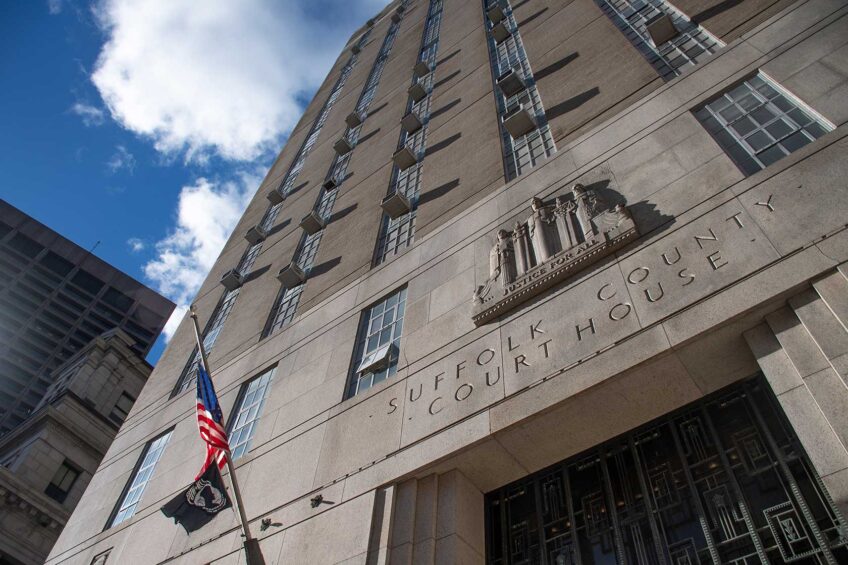Republican Charles Baker makes two key points in criticizing the financial stewardship of Deval Patrick, the first-term Democrat he is trying to unseat as governor.
The first is that Patrick began spending the state’s rainy-day fund “before it started to rain.” That claim is correct.
The other is the governor created a deficit for the state in 2007 by immediately reversing spending cuts made by his predecessor, Republican Gov. Mitt Romney. On that, Baker is wrong.
Both claims have been an early flashpoint in a campaign that includes a third candidate, Treasurer Timothy Cahill, a former Democrat running as an independent.
Baker, who was the Weld administration’s budget chief before becoming president of Harvard Pilgrim Health Care, says his background would make him a better custodian of the state’s finances.
He says Massachusetts is limping through the recession on its savings and federal stimulus funding, rather than slashing spending and fundamentally changing its operations.
“We should have been pursuing reforms and savings initiatives so that once all that one-time money runs out, we’d be in a position to live with whatever that new normal looks like,” Baker said last week.
Patrick says Baker is being dishonest. Patrick notes the three major bond rating agencies have repeatedly affirmed the state’s credit rating, citing his aggressive fiscal management.
“If there’s this little integrity in the campaign, where’s the integrity going to be in the administration?” the governor asked last week.
The Commonwealth Stabilization Fund is designed to be filled in good economic times and tapped during the bad. The aim of the “rainy-day fund” is to minimize tax increases and public service cuts amid the normal ebb and flow of economic cycles.
When Patrick took office, the state was in the middle of its 2007 fiscal year. When that ended on June 30, 2007, the fund contained a record $2.34 billion.
For the 2008 fiscal year, Patrick crafted a budget that spent $75 million in interest the fund was expected to accrue from its hefty balance — the third-highest in the country. The Legislature did him one better: It passed a budget spending not only that $75 million, but withdrawing another $240 million.
Both the governor and Democrats who control the House and Senate bet state tax collections would ultimately be stronger than expected, allowing them to avoid the budgeted withdrawals. They were right: tax receipts ended up exceeding expectations, but the money was withdrawn anyway.
First, the state had to make $235 million in local aid payments to cities and towns after the Lottery — run by Cahill — failed to deliver the money it promised them. Second, the state also advanced $100 million in Medicaid payments the federal government later reimbursed.
All told, the rainy-day fund’s balance was reduced to $2.12 billion by the end of the 2008 fiscal year. That is three months before the stock market and auto industries collapsed, and Lehman Brothers, AIG and other major financial institutions went into convulsions soothed only with federal bailouts.
When the new fiscal year began July 1, 2008, the state had a budget balanced through another $310 million withdrawal from the fund. Again, Patrick expected tax revenues would prove strong enough to replenish the money at the end of the fiscal year, despite a slowing economy that prompted all the state’s Republican lawmakers to vote against the budget. Four months later, the depth of the state’s financial crisis became clear.
Patrick made the first of three rounds of emergency budget cuts — and additional rainy-day withdrawals.
Therefore, Baker is correct in saying Patrick spent rainy-day money “before it started to rain.” Under the governor’s watch, the state withdrew $625 million from the fund before September 2008, including $335 million to cover the Lottery shortfall and advance the federal Medicaid payments.
Then, when tax receipts plummeted, the governor started tapping the fund for its intended purpose. He withdrew $200 million in October 2008 to close a budget gap. In January 2009, he withdrew another $327 million. And in May 2009, he took out another $461 million. He also was unable to replenish the $310 million he withdrew at the start of the fiscal year.
By the end of the 2009 fiscal year, the rainy-day balance was down to $841 million. This year, it is expected to drop to $658 million, and Patrick has planned a further withdrawal for the fiscal year beginning July 1 that would reduce it to $530 million.
As to whether Patrick created a deficit by reversing $383 million worth of Romney’s budget cuts, Baker is misrepresenting the balance sheet.
In the 2007 fiscal year, which started when Romney was governor and finished after Patrick took office, the state had revenues of $29.17 billion and expenditures of $29.48 billion. On paper, that creates a deficit of $307 million, as Baker claims in a Web ad attacking Patrick.
Yet those expenditures included spending approved in 2006 while Romney was governor, and for which money was set-aside in a separate budget line item. All told, the state not only balanced its 2007 budget, but ended up making a $91 million deposit in the rainy-day fund, boosting its balance to $2.34 billion.
Baker’s ad is wrong.
Associated Press






